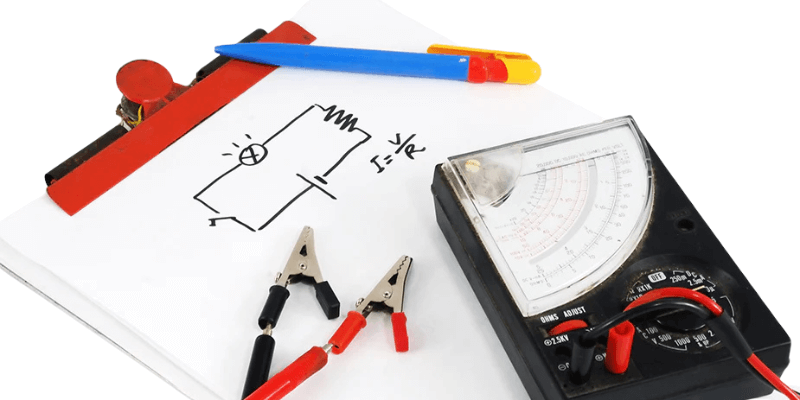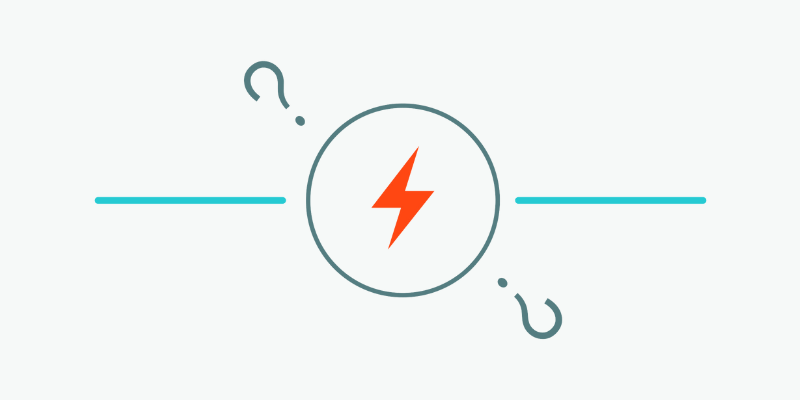AMP, Вольт, Уотты и Ом являются ключевыми концепциями в электрических системах. Хотя это может показаться сложным, вам не нужна инженерная степень, чтобы понять электричество. Электричество течет, как вода через шланг: электроны перемещаются через проводник, обычно провод. Чтобы прояснить эти концепции, мы будем использовать аналогию с водой и шлангом, чтобы объяснить каждую индивидуально.
Что такое усилители?
AMPERE (AMP) измеряет электрический ток, скорость, с которой электроны протекают через проводник, представленный “я” в уравнениях. Подразделение названо в честь французского физика Андре-Мари Ампер, пионера электромагнетизма.
В аналогии с водой электрический ток соответствует скорости потока воды через шланг.
Внутри панели обслуживания вашего дома или ящика для выключателя вы найдете автоматические выключатели, помеченные 15, 20 и 30 ампер. Более высокая сила допускает больше электричества течь. Крупные приборы, такие как кондиционеры, соединяются с цепями 30-амвонов, в то время как большинство розетки используют схемы 20-ам-ампонов или 15-амвонов. Запуск слишком большого количества приборов на той же схеме будет отключить выключатель, отрезая питание, чтобы предотвратить перегрев.

Что такое вольт?
Вольт, представлено “V,” Измеряет электрический потенциал, который движет электричеством через систему. Они отражают скорость электронов, движущихся через цепь и измеряются в вольт. OLT названы в честь итальянского физика Алессандро Вольты.
В аналогии с водой напряжение похоже на давление воды, которое перемещает воду через шланг, аналогичный тому, как оно проталкивает электроны через проводник.
В Соединенных Штатах электрическая энергия доставляется в дома при двух напряжениях: 120 вольт и 240 вольт. Крупные приборы, такие как кондиционеры и электрические диапазоны, используют 240 вольт, в то время как меньшие устройства, такие как лампочки и зарядные устройства для мобильных телефонов, работают на 120 вольт.
Что такое Ом?
Назван в честь немецкого физика и математика Георг Саймон Ом, OHME измеряют электрическое сопротивление в проводнике и представлены “Р” в уравнениях. Сопротивление замедляет поток электронов.
В аналогии с водой это приравнивается к диаметру шланга. Шлант обеспечивает небольшое сопротивление и обеспечивает быстрый поток воды. Точно так же проводники с низким сопротивлением, например, медный проволока, включают легкий электронный поток.

Что такое Уоттс?
Мощность является наиболее знакомым единицей электричества, измерение мощности, которую потребляет электрическое устройство Уэтт, представлено “П” в уравнениях. Уоттс названа в честь Джеймса Уотта, шотландского инженера, который популяризировал паровой двигатель.
Используя аналогию с водой, мощность может быть увеличена либо при повышении потока воды, либо давлением. Точно так же в электрической системе вы можете повысить мощность, увеличивая ток или напряжение.
Для расчета мощности, умножьте напряжение (v) на маругу (a): v x a = w. Более высокое движение электрона и больший объем цепи приводит к более высокой мощности. Например, запуск вакуума использует от 400 до 900 Вт, в то время как звонок в дверь требует всего 2-4 Вт.
Напряжение, ток, сопротивление
Закон Ома Связывает напряжение, ток и сопротивление через уравнение v = i x r (где v - напряжение в вольт, я ток в усилителях, а r - сопротивление в Ом). Увеличение напряжения при сохранении постоянного сопротивления приводит к росту тока.
Использование аналогии с шлангом: увеличение давления позволяет больше воды течь. И наоборот, если сопротивление увеличивается, в то время как напряжение остается устойчивым, ток уменьшается. Это похоже на защипание шланга; Сниженный диаметр приводит к меньшему количеству воды.

Электрическая эффективность
В электрической системе увеличение тока или напряжения повышает мощность.
Например, 6-вольтовая лампочка, подключенная к 6-вольтовой батарее, производит 100 Вт. Используя формулу I = P / V, требуемый ток: i = 100 Вт / 6 В = 16,67 ампер. Если вы используете 12-вольтовую батарею и лампочку вместо этого: I = 100 Вт / 12 В = 8,33 А. Эта настройка достигает той же мощности с половиной тока, уменьшая потери меди в проводах, поскольку сопротивление потребляет большую мощность по мере увеличения тока.
Отношение выражается как p = I²R, что указывает на то, что более высокое сопротивление или увеличение тока приводят к большей потере мощности в проводах. Таким образом, использование более высокого напряжения является более эффективным для электрических систем, а также повышение эффективности электродвигателя.
В 1990-х годах эта концепция побудила автопроизводителей рассмотреть вопрос о переходе от традиционных 12-вольтовых систем на системы с более высоким напряжением (42 В) для повышения эффективности проводки из-за роста электрических удобств в автомобилях. Тем не менее, производители выбрали против этот переключатель потому что они повысили эффективность, используя цифровые технологии при более низких напряжениях. Сегодняшние гибридные и полностью электромобили обычно работают от 450 до 650 вольт для мощных двигателей, сохраняя при этом эффективные решения для проводки.
Watts / Volts / Amps / Ohms Calculator
Введите любые два значения ниже, чтобы рассчитать другие:

